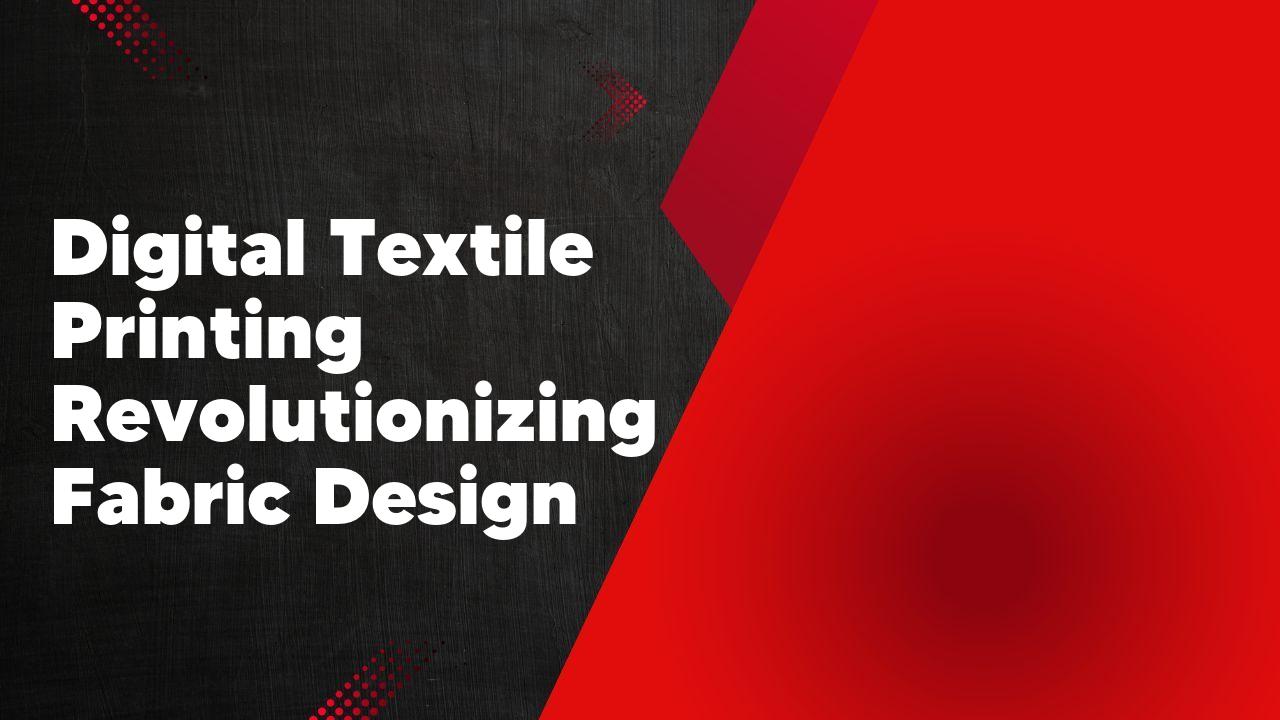Digital textile printing has emerged as a game-changer in the world of fabric design, revolutionizing the way patterns and designs are created and applied to textiles. This innovative technology allows for greater flexibility, customization, and efficiency in the production process, opening up new possibilities for designers and manufacturers alike. With its ability to produce high-quality, vibrant prints on a wide range of fabrics, digital textile printing is quickly becoming the preferred choice for many in the industry.
The Rise of Digital Textile Printing in the Fashion Industry
Digital textile printing has revolutionized the fashion industry, offering designers and manufacturers a more efficient and sustainable way to create unique and personalized garments. This innovative technology allows for the direct printing of designs onto fabric, eliminating the need for traditional screen printing methods. With digital textile printing, designers have the freedom to experiment with intricate patterns, vibrant colors, and even photo-realistic images. Additionally, this process reduces waste and water consumption, making it a more environmentally friendly option. As a result, digital textile printing has gained popularity among fashion brands, enabling them to produce high-quality and on-demand products that cater to the ever-changing consumer demands.
How Digital Textile Printing is Transforming Fabric Design

Digital textile printing has revolutionized the world of fabric design, offering endless possibilities and transforming the way designers create and produce their designs. With this technology, designers can now easily transfer their digital designs onto fabric, eliminating the need for traditional printing methods such as screen printing or heat transfer. This not only saves time and money, but also allows for greater creativity and flexibility in design. Digital textile printing also offers a more sustainable option, as it reduces waste and uses less water and energy compared to traditional printing methods. Overall, digital textile printing has opened up a whole new world of possibilities for fabric design, allowing designers to bring their visions to life in a more efficient and sustainable way.
Advantages of Digital Textile Printing for Fabric Designers
Digital textile printing offers numerous advantages for fabric designers. Firstly, it allows for greater design flexibility and creativity. Designers can easily experiment with different colors, patterns, and textures, and make quick changes to their designs without the need for costly and time-consuming screen setups. Additionally, digital printing offers a faster turnaround time, allowing designers to bring their creations to market more quickly. This technology also enables designers to print small quantities of fabric, reducing waste and inventory costs. Furthermore, digital printing offers high-quality and vibrant prints, ensuring that the final product meets the designer’s vision. Overall, digital textile printing revolutionizes the fabric design process, offering designers more freedom, efficiency, and cost-effectiveness.
Exploring the Limitless Possibilities of Digital Textile Printing
Digital textile printing has revolutionized the world of fabric design and production. With this technology, designers and manufacturers have the ability to create intricate and vibrant patterns on a wide range of fabrics. The possibilities are truly limitless. From clothing and home decor to accessories and upholstery, digital textile printing allows for endless creativity and customization. This technology also offers numerous benefits, such as reduced waste, faster production times, and the ability to print on demand. As the industry continues to evolve, we can expect to see even more innovative uses of digital textile printing, further pushing the boundaries of design and fashion.
The Impact of Digital Textile Printing on Sustainable Fashion
Digital textile printing has had a significant impact on the sustainable fashion industry. This innovative technology allows for more precise and efficient printing processes, reducing waste and minimizing the use of harmful chemicals. With digital printing, designers can create intricate and detailed patterns without the need for multiple screens or plates, further reducing waste and energy consumption. Additionally, digital printing allows for on-demand production, eliminating the need for large inventories and reducing the risk of overproduction. This not only saves resources but also reduces the amount of unsold inventory that often ends up in landfills. Overall, digital textile printing has revolutionized the fashion industry by making it more sustainable and environmentally friendly.
Future Trends in Digital Textile Printing for Fabric Design
Digital textile printing is revolutionizing the fabric design industry, and there are several future trends that are expected to shape this field even further. One of the key trends is the increasing demand for sustainable and eco-friendly printing methods. As consumers become more conscious about the environmental impact of their choices, there is a growing need for digital textile printing techniques that use less water, energy, and chemicals. Another trend is the integration of smart technology into fabric design. This includes the use of conductive inks and sensors to create interactive and functional textiles. Additionally, there is a rising interest in customization and personalization, with consumers seeking unique and one-of-a-kind designs. Overall, the future of digital textile printing looks promising, with advancements in sustainability, technology, and customization driving the industry forward.
Conclusion
In conclusion, digital textile printing has brought about a revolution in fabric design. It has allowed designers to unleash their creativity and experiment with a wide range of colors, patterns, and textures. With its numerous advantages such as cost-effectiveness, customization, and sustainability, digital textile printing is set to continue transforming the fabric design industry in the years to come.
What is digital textile printing?
Digital textile printing is a modern printing technique that involves printing designs directly onto fabric using digital technology.
How does digital textile printing work?
Digital textile printing works by using specialized inkjet printers that are designed to print directly onto fabric. The printers use digital files to create high-quality prints with vibrant colors and intricate details.
What are the advantages of digital textile printing?
Some advantages of digital textile printing include faster production times, lower costs for small print runs, the ability to print on a wide range of fabrics, and the ability to create highly detailed and complex designs.
Is digital textile printing environmentally friendly?
Yes, digital textile printing is considered to be more environmentally friendly compared to traditional printing methods. It produces less waste, uses less water and energy, and eliminates the need for screens and plates.
Can digital textile printing be used for both small and large-scale production?
Yes, digital textile printing can be used for both small and large-scale production. It is highly versatile and can accommodate different print volumes, making it suitable for both individual designers and large textile manufacturers.
What industries benefit from digital textile printing?
Various industries benefit from digital textile printing, including fashion, home decor, interior design, and advertising. It allows for more creative freedom and customization, making it a popular choice for businesses in these sectors.

